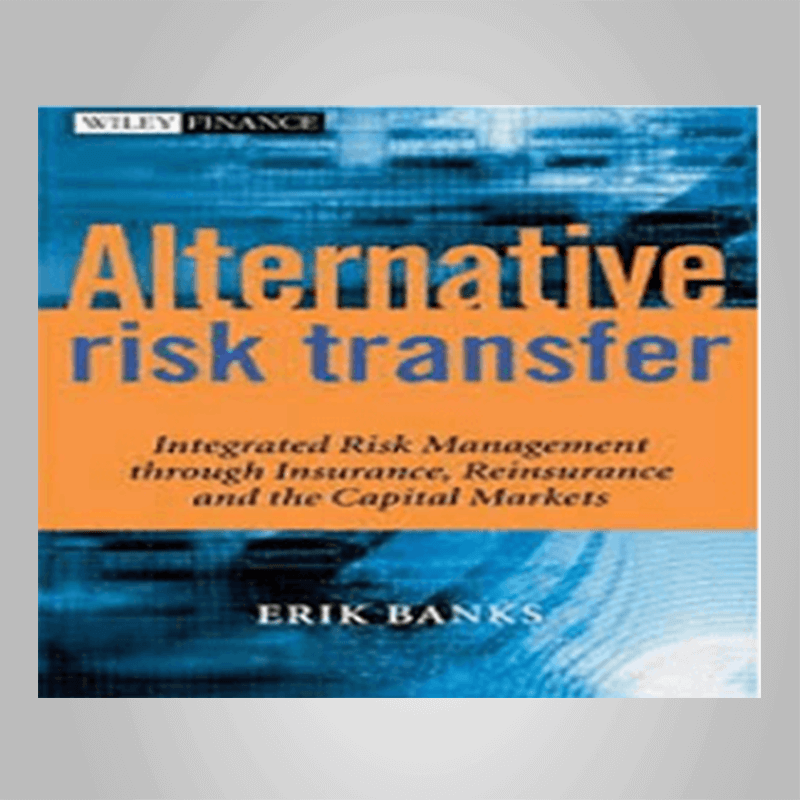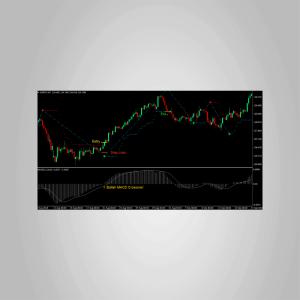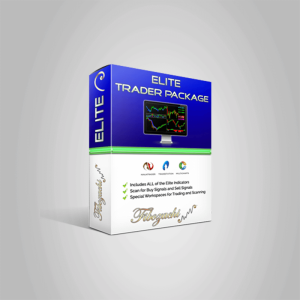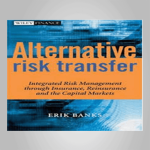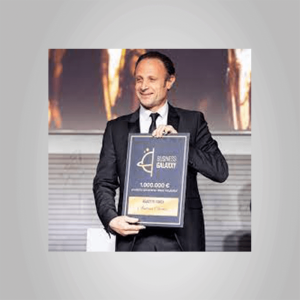Erik Banks – Alternative Risk TransferDESCRIPTIOA practical approach to ART-an alternative method by which companies take on various types of riskThis comprehensive book shows readers what ART is, how it can be used to mitigate risk, and how certain instruments/structures associated with ART should be implemented. Through numerous examples and case studies, readers will learn what actually works and what doesn’t when using this technique.Erik Banks (CT) joined XL Capital’s weather/energy risk management subsidiary, Element Re, as a Partner and Chief Risk Officer in 2001.TABLE OF CONTENTSAcknowledgements ixBiography xiPART I: RISK AND THE ART MARKET 11 Overview of Risk Management 31.1 Risk and return 31.2 Active risk management 51.2.1 Risk management processes 61.2.2 Risk management techniques 71.2.3 General risk management considerations 101.3 Risk concepts 121.3.1 Expected value and variance 121.3.2 Risk aversion 141.3.3 Risk transfer and the insurance mechanism 161.3.4 Diversification and risk pooling 171.3.5 Hedging 201.3.6 Moral hazard, adverse selection and basis risk 211.3.7 Non-insurance transfers 221.4 Outline of the book 222 Risk Management Drivers: Theoretical Motivations, Benefits, and Costs 252.1 Maximizing enterprise value 252.2 The decision framework 292.2.1 Replacement and abandonment 312.2.2 Costs and benefits of loss control 312.2.3 Costs and benefits of loss financing 322.2.4 Costs and benefits of risk reduction 352.3 Coping with market cycles 352.3.1 Insurance pricing 352.3.2 Hard versus soft markets 372.4 Accessing new risk capacity 422.5 Diversifying the credit risk of intermediaries 432.6 Managing enterprise risks intelligently 442.7 Reducing taxes 452.8 Overcoming regulatory barriers 462.9 Capitalizing on deregulation 473 The ART Market and its Participants 493.1 A definition of ART 493.2 Origins and background of ART 513.3 Market participants 523.3.1 Insurers and reinsurers 533.3.2 Investment, commercial, and universal banks 553.3.3 Corporate end-users 563.3.4 Investors/capital providers 573.3.5 Insurance agents and brokers 573.4 Product and market convergence 58PART II: INSURANCE AND REINSURANCE 614 Primary Insurance/Reinsurance Contracts 634.1 Insurance concepts 634.2 Insurance and loss financing 644.3 Primary insurance contracts 654.3.1 Maximum risk transfer contracts 654.3.2 Minimal risk transfer contracts 664.3.3 Layered insurance coverage 764.4 Reinsurance and retrocession contracts 784.4.1 Facultative and treaty reinsurance 814.4.2 Quota share, surplus share, excess of loss, and reinsurance pools 814.4.3 Finite reinsurance 865 Captives 895.1 Using captives to retain risks 895.1.1 Background and function 895.1.2 Benefits and costs 915.2 Forms of captives 945.2.1 Pure captives 945.2.2 Sister captives 955.2.3 Group captives 955.2.4 Rent-a-captives and protected cell companies 965.2.5 Risk retention groups 995.3 Tax consequences 1006 Multi-risk Products 1036.1 Multiple peril products 1036.2 Multiple trigger products 106PART III: CAPITAL MARKETS 1137 Capital Markets Issues and Securitization 1157.1 Overview of securitization 1157.2 Insurance-linked securities 1167.2.1 Overview 1167.2.2 Costs and benefits 1187.3 Structural features 1197.3.1 Issuing vehicles 1197.3.2 Triggers 1217.3.3 Tranches 1237.4 Catastrophe bonds 1247.4.1 Hurricane 1247.4.2 Earthquake 1277.4.3 Windstorm 1297.4.4 Multiple cat peril ILS and peril by tranche ILS 1297.4.5 Bond/derivative variations 1307.5 Other insurance-linked securities 1318 Contingent Capital Structures 1358.1 Creating post-loss financing products 1358.2 Contingent debt 1398.2.1 Committed capital facilities 1398.2.2 Contingent surplus notes 1408.2.3 Contingency loans 1418.2.4 Financial guarantees 1428.3 Contingent equity 1428.3.1 Loss equity puts 1438.3.2 Put protected equity 1469 Insurance Derivatives 1499.1 Derivatives and ART 1499.2 General characteristics of derivatives 1509.3 Exchange-traded insurance derivatives 1569.3.1 Exchange-traded catastrophe derivatives 1569.3.2 Exchange-traded temperature derivatives 1579.4 OTC insurance derivatives 1629.4.1 Catastrophe reinsurance swaps 1629.4.2 Pure catastrophe swaps 1649.4.3 Temperature derivatives 1649.4.4 Other weather derivatives 1669.4.5 Credit derivatives 1679.5 Bermuda transformers and capital markets subsidiaries 168PART IV: ART OF THE FUTURE 17110 Enterprise Risk Management 17310.1 Combining risks 17310.1.1 The enterprise risk management concept 17310.1.2 Costs and benefits 17710.2 Developing an enterprise risk management program 17910.2.1 Strategic and governance considerations 18010.2.2 Program blueprint 18210.2.3 Program costs 18610.3 End-user demand 18811 Prospects for Growth 19311.1 Drivers of growth 19311.2 Barriers to growth 19411.3 Market segments 19611.3.1 Finite structures 19611.3.2 Captives 19711.3.3 Multi-risk products 19711.3.4 Capital markets issues 19811.3.5 Contingent capital 19811.3.6 Insurance derivatives 19911.3.7 Enterprise risk management 19911.4 End-user profiles 20111.5 Future convergence 202Glossary 205Selected References 221Index 223 AUTHOR INFORMATIONERIK BANKS has held senior risk management positions at several global financial institutions, including XL Capital, where he was Partner and Chief Risk Officer of the Bermuda reinsurer’s derivative subsidiary, and Merrill Lynch, where he spent 13 years managing credit and market risk teams in Tokyo, Hong Kong, London and New York. Mr. Banks has written various books on risk management, emerging markets, derivatives, merchant banking, and electronic finance.

